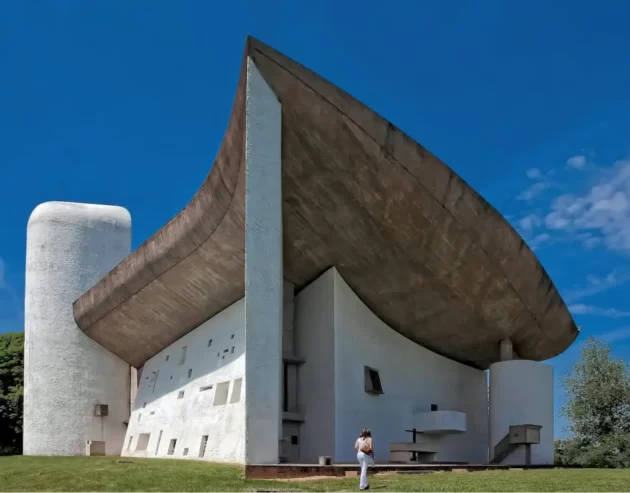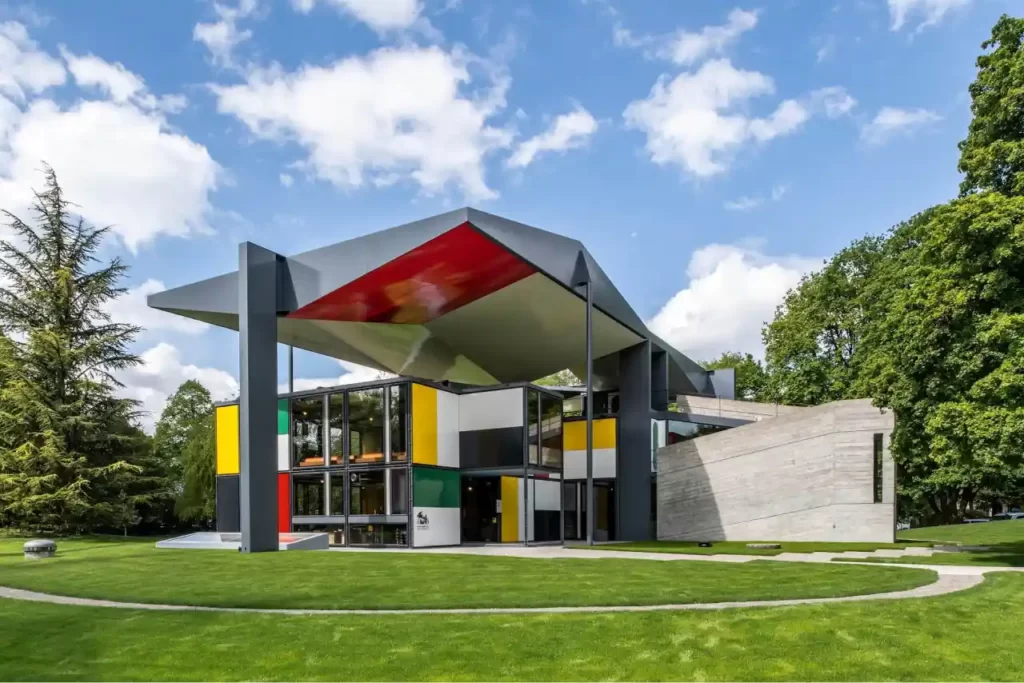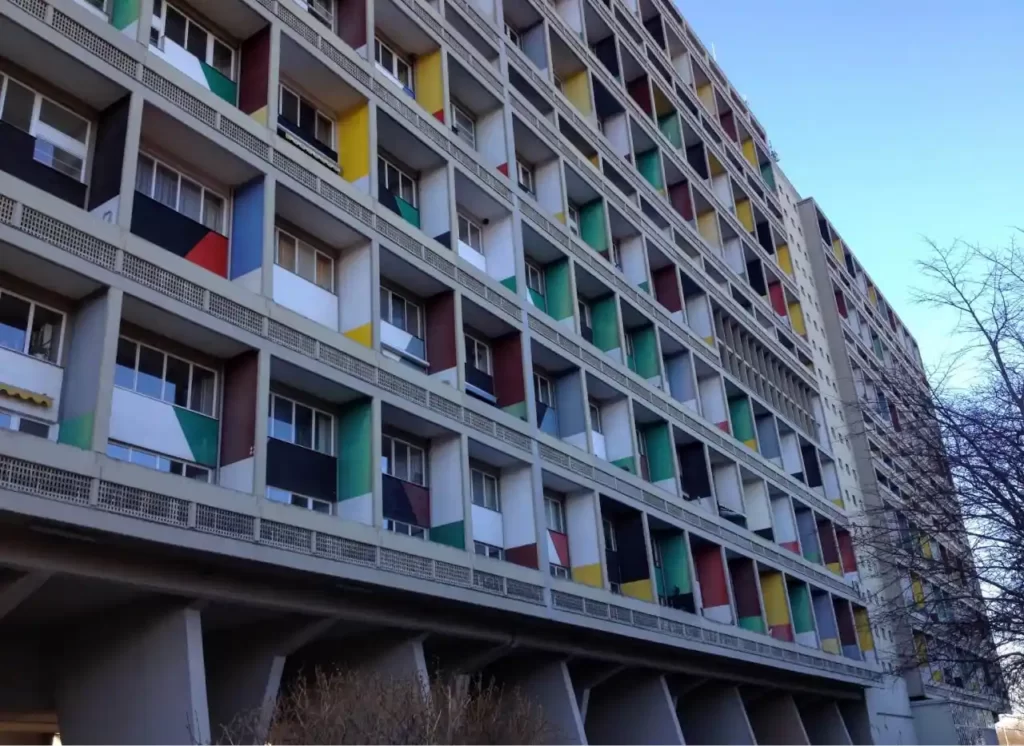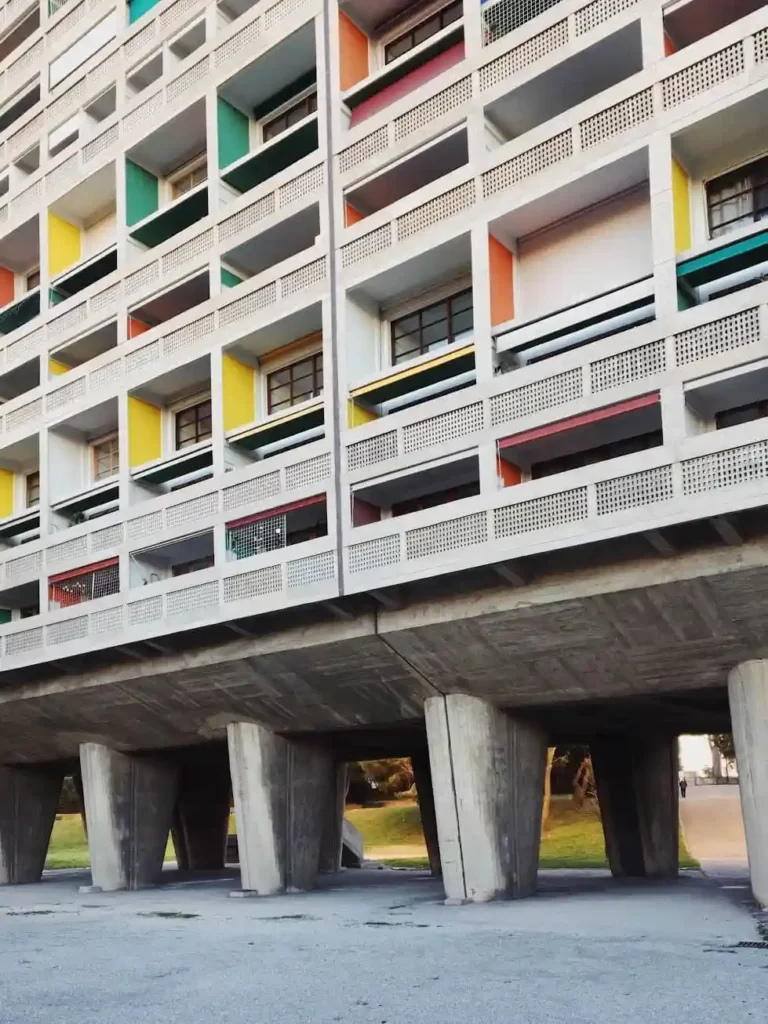Le Corbusier is one of the most famous architects of all time and a vital figure in Modernist architecture. He designed buildings worldwide, in Europe, Asia, and North and South America. With most of his architecture located on the Old Continent, here is the Culture Tourist’s guide on where to see Le Corbusier’s buildings in Europe. Keep on reading to learn more about this fascinating architect and his work.
Le Corbusier’s architecture in Europe
Le Corbusier designed more than sixty buildings in Europe, most of which are located in France and Switzerland. He made public, residential and sacral edifices. Even though some were preserved only as ideas, they changed the perception of contemporary housing and modern architecture.
Modern decorative art has no decoration. (Le Corbusier)
Who was Le Corbusier
Le Corbusier’s personality is quite similar to his buildings – extraordinary but a bit controversial. He was born in 1887 in Switzerland and moved to France later in his life. So today, he’s considered a Swiss-French architect. Born as Charles-Édouard Jeanneret, the famous artist took the pseudonym Le Corbusier in 1920 and used it until his death in 1965.
Although he is considered one of the most influential world architects today, Le Corbusier didn’t have any formal education in that profession. He went to an art high school and learned about architecture through books, magazines, museum visits, and travelling around Europe.
The first house he designed was his parent’s home. Finished in 1912, it was built in La Chaux-de-Fonds in Switzerland. After he opened a studio with his cousin Pierre Jeanneret in Paris in 1922, he started getting commissions for different kinds of buildings.
Le Corbusier wasn’t only designing edifices. He also wrote numerous theoretical papers and books about modern architecture, creating a new style that would change the appearance of 20th-century architecture completely.
Le Corbusier is a bit controversial for his political views, especially between the 1920s and 1940s. If you’d like to learn more about that, this article from The New York Times explains it well.
⤷ Read more: Cultural tourism explained – How to be a cultural tourist
Top 10 Le Corbusier’s architecture in Europe
Although there are so many fantastic examples of Le Corbusier’s architecture in Europe, here are some of the locations not to be missed.
1 – Villa Fallet, La Chaux-de-Fonds (Switzerland)
Address: Chemin de Pouillerel 1, 2300 La Chaux-de-Fonds, Switzerland
Villa Fallet was the first building designed by Le Corbusier when he was only eighteen. He made it together with two other students under the supervision of their teacher. The house was built in a traditional Alpine style typical for that part of Switzerland and completed in 1905-1906.
⤷ TIP: The house could be visited by making a reservation to the Association Maison Blanche in La Chaux-de-Fonds.
Modern life demands, and is waiting for, a new kind of plan, both for the house and the city. (Le Corbusier)
2 – Villa Savoye, Poissy (France)
Address: 82 Rue de Villiers, 78300 Poissy, France
Built between 1928 and 1931, Villa Savoye is one of Le Corbusier’s most famous buildings. He used reinforced concrete in its construction. Le Corbusier also implemented his ‘five points for new constructions’, making Villa Savoye one of the most outstanding examples of the International style. With its ground floor painted green, it feels like the house is floating. Originally built as a country house for the Savoye family, it’s been owned by the state of France since 1958. Villa Savoye is open to the public today and can be visited.
3 – Chapelle Notre-Dame du Haut, Ronchamp (France)
Address: 13 Rue de la Chapelle, 70250 Ronchamp, France
After the previous chapel was destroyed during the Second World War, Le Corbusier was commissioned to build a new one. He finished it in 1955, implementing a radical and innovative design. It’s pretty unique among the work of Le Corbusier because he didn’t use standardised architectural elements like in his other buildings. Instead, he is adjusting the shape of a building to its location and surroundings. Especially interesting is his way of using the light, with different window sizes and wall thicknesses.
Light creates ambience and feel of a place, as well as the expression of a structure. (Le Corbusier)
4 – Villa La Roche, Paris (France)
Address: 8-10 Square du Dr Blanche, 75016 Paris, France
Villa La Roche was designed between 1923 and 1925 for the Swiss banker and art collector. It’s located in Paris and is home to a museum and Fondation Le Corbusier. It’s an exciting place not only to see his architecture but also the furniture he designed. Serving as a museum, it’s home to an extensive collection of Le Corbusier’s plans and drawings, as well.
⤷ Read more: Modern architecture in Paris
5 – Cité Frugès de Pessac (France)
Address: 4 Rue Le Corbusier, 33600 Pessac, France
Le Corbusier developed some interesting interpretations of urban planning. For example, in his ‘Plan Voisin’, he introduced the idea of destroying and rebuilding a large area in the centre of Paris. However, he first got an opportunity to implement some of them when he worked on a large residential area within the Cité Frugès. It was a worker housing complex located in the Bordeaux suburb of Pessac.
It’s where Le Corbusier first designed modular housing units placed in multiple rectangular blocks. Although his plan was much more extensive, he built 51 buildings in the end. This project was a test for his later, more complex project, Cité Radieuse in Marseille.
6 – Pavillon Le Corbusier, Zürichhorn (Switzerland)
Address: Höschgasse 8, 8008 Zürich, Switzerland
The Pavillon Le Corbusier is the last building built by a famous architect. It was commissioned by an art collector Heidi Weber. She had the idea of creating a complete artwork in which the building and all the exhibits would be made by the same person. After it was finished in 1965, she displayed Le Corbusier’s drawings, paintings and statues in it.
In 2014, the City of Zürich became its owner and renamed the Heide Weber Museum into the Pavillon Le Corbusier which is open to the public.
7 – Maison Guiette, Antwerp (Belgium)
Address: Populierenlaan 32, 2020 Antwerpen, Belgium
Probably one of the lesser known Le Corbusier works, Maison Guiette was built in 1926, and it’s an early example of the International Style. The building was designed for the Belgian artist and art critic René Guiette.
The history of architecture is the history of the struggle for light. (Le Corbusier)
8 – Church of Saint-Pierre, Firminy (France)
Address: 29 Rue des Noyers, 42700 Firminy, France
Saint-Pierre in Firminy is Le Corbusier’s quite unique work. The construction started in 1965 after the famous architect was already dead. It was built for a long time and completed only in 2006. Although designed as a church, it was never used as one. It has had several purposes since it was built – it was used as a shelter, a secondary school, and, today, as a cultural venue.
⤷ Read more: 20 Most iconic churches in Europe
9 – Unité d’Habitation, Berlin (Germany)
Address: Flatowallee 16, 14055 Berlin, Germany
Unité d’Habitation was designed for the International residential housing exhibition organised in Berlin in 1957. Its design follows Le Corbusier’s idea of modular housing he developed for residential buildings. His original plan was changed during the construction, and later restoration works. However, it’s an interesting example of Le Corbusier’s architecture to see in Germany.
The materials of city planning are: sky, space, trees, steel and cement; in that order and that hierarchy. (Le Corbusier)
10 – Cité radieuse, Marseille (France)
Address: 280 Bd Michelet, 13008 Marseille, France
Built between 1947 and 1952, this is one of the most famous Le Corbusier’s buildings in Europe. Same as the residential building from Berlin, in its style and form, it shows the Brutalist concept. With his urbanistic idea for the residential areas in the cities, Le Corbusier wanted to revolutionise the life in the cities. It was especially important to do so with social housing after the Second World War.
Le Corbusier created the module of a standard apartment for the families within the building. One of these modules is located in a museum Cite de l’Architecture et du Patrimoine in Paris. You can enter one of those standardised apartments and see what their interior looks like.
Destinations Le Corbusier: Architectural promenades
Destinations Le Corbusier: Architectural promenades, managed by the Association of Le Corbusier Sites, is a Cultural Route of the Council of Europe that connects and promotes Le Corbusier’s sites. Several of his buildings are on UNESCO’s World Heritage List. To make visiting these places easier for cultural tourists, they work on making them more accessible to the public. If you’d like to learn more about them, check out their website at this link.
⤷ Read more: The best museums in Paris
With his revolutionary ideas and innovative architecture, Le Corbusier changed the appearance of modern Europe. I hope this guide about where to see Le Corbusier’s architecture in Europe will help you plan a visit to some of these places.
Have you been to any of Le Corbusier’s buildings in Europe? Let me know in the comments!
Many thanks to Ms Leslie Mozdzan and the Association of Le Corbusier Sites for providing this article’s photo material and additional information.
Cover photo by Ricardo Gomez Angel on Unsplash












